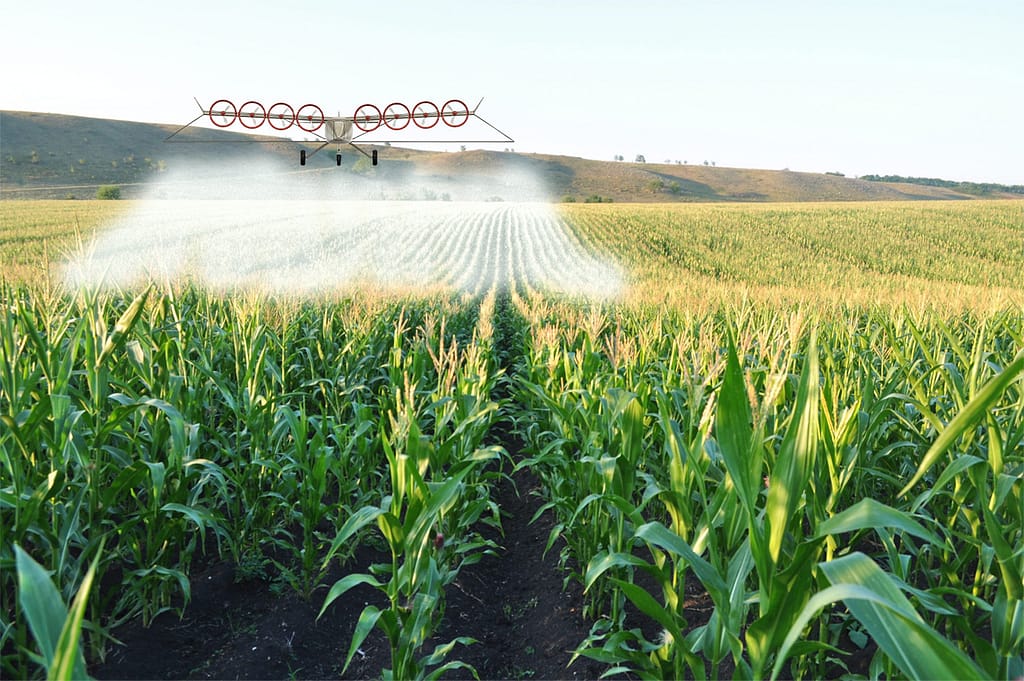
Embracing renewable energy and green agriculture in a post-oil-boom economy says Gene Avakyan, CEO of Edison Aerospace.
I want to start with a story about innovation and agriculture that spans the last 10,000 years. Since our ancestors began cultivating crops, we’ve had cycles of innovation that raised crop yields that fed a growing population. These cycles enabled us to develop knowledge that in turn produced more innovation, and so on and so forth.
Population went from 5 million in 8,000 BC to almost 8 billion today. But if we look at a graph of this growth, we see it exploding only in the last 200 years. This coincides with the industrial revolution and the discovery of oil. This boom is predicted to reach 10 billion by year 2050. Crop production will need to DOUBLE to handle this.
The alternative is famine and mass starvation. The acceleration of innovation that followed these events is truly amazing when we look at the 20th century – only 60 years separate Wright brothers’ first flight from man landing on the moon!
But since nothing lasts forever, there is a problem with this boom – it was powered by oil, and oil supplies are limited. Total production and reserves are on a decline. This means that what got us here won’t get us there. The pollution caused by burning fossil fuels still chokes many cities and has left permanent marks behind. So, the big question is – how do we create the next Ag evolution to feed still more people in this cycle of technology racing ahead of an approaching tidal wave of population growth?

Electricity is the best choice to replace oil, but we’ve still got challenges to overcome.
We’ve got to improve storage energy density and come up with cleaner ways of producing electrical power, including more efficient renewable methods. The US still burns fossil fuels to get 60% of its power, and that’s a problem! Some use cases for electrification simply aren’t practical yet. But many others are. We can’t make an electric airliner today, but Tesla has already sold 2 million great cars!
However you look at it, the long term trend is for oil prices to rise and electricity costs to decline. I decided to make a small contribution to help the process of change. I’ve set a crazy goal of replacing existing spray aircraft with electric autonomous models. But then, they used to call Elon Musk crazy for saying that we’ll buy his electric cars, too. The reasons why this will succeed and why spray operators will make the switch are manyfold. This is one use case that can be electrified and automated today, quickly and profitably for all the parties involved.

Aerial application is vital for agriculture at scale and the last 100 years have seen this industry grow tremendously. However, fossil fuel Ag aircraft, burn 125M gallons of fuel and kill about 10 pilots annually in the US alone. They also cost their operators so much to buy and operate that they work on tight margins, are at the mercy of fuel prices and foreign oil markets, have no pricing flexibility, and thus cannot expand their services to more farms to help them raise their yields. Take direct fuel costs, for example: an Air Tractor turbine sprayer burns about 50 gallons per hour for a total of almost $300.
Edison Aerospace aircraft would use about $14 in electricity over the same hour of operation, covering almost the same acreage. What about maintenance? A rebuild of a turbine, required every 3600 hrs, costs as much as our entire aircraft, about $400,000. Our maintenance costs are projected to be one tenth as much for the same period.
This puts into perspective how electric vehicles can positively affect agriculture and are much more than a green fad. So what would our solution look like?
Our first model will be about the size of a Cessna 172, carrying 200 gallons of payload. This will be followed by a bigger model, about the size of a Cessna caravan, carrying 400 gallons of payload. As I said, I don’t believe in half-way measures!
Edison Aerospace aircraft will be a direct replacement for our customers’ existing aircraft, and those customers are already licensed and certified, and have an existing client base they service. This to me is a formula for successful market adoption.
We are aiming at a segment of the aviation industry that will be most receptive to our aircraft and one that has no direct competitors to our product except for traditional fossil fuel aircraft. We are solving customers’ existing pain points:
- High acquisition cost
- Volatile energy prices
- High maintenance cost
- Inability to compete on price
- Pilot safety

I think we all want to see farmers and spray operators run more profitable businesses to stay in the industry and make it more resilient as a result. I see this as the ultimate win-win scenario for the Ag industry and the end consumers. It is up to us to take agriculture to its next evolution as we move beyond the oil boom period. This is not just about Edison Aerospace, ours is only a small piece of the big picture. It’s about agriculture, food security, and our future on this planet. This is an existential question that will be answered one way or another, with billions of lives hanging in the balance.
So … let’s save the world, together!
